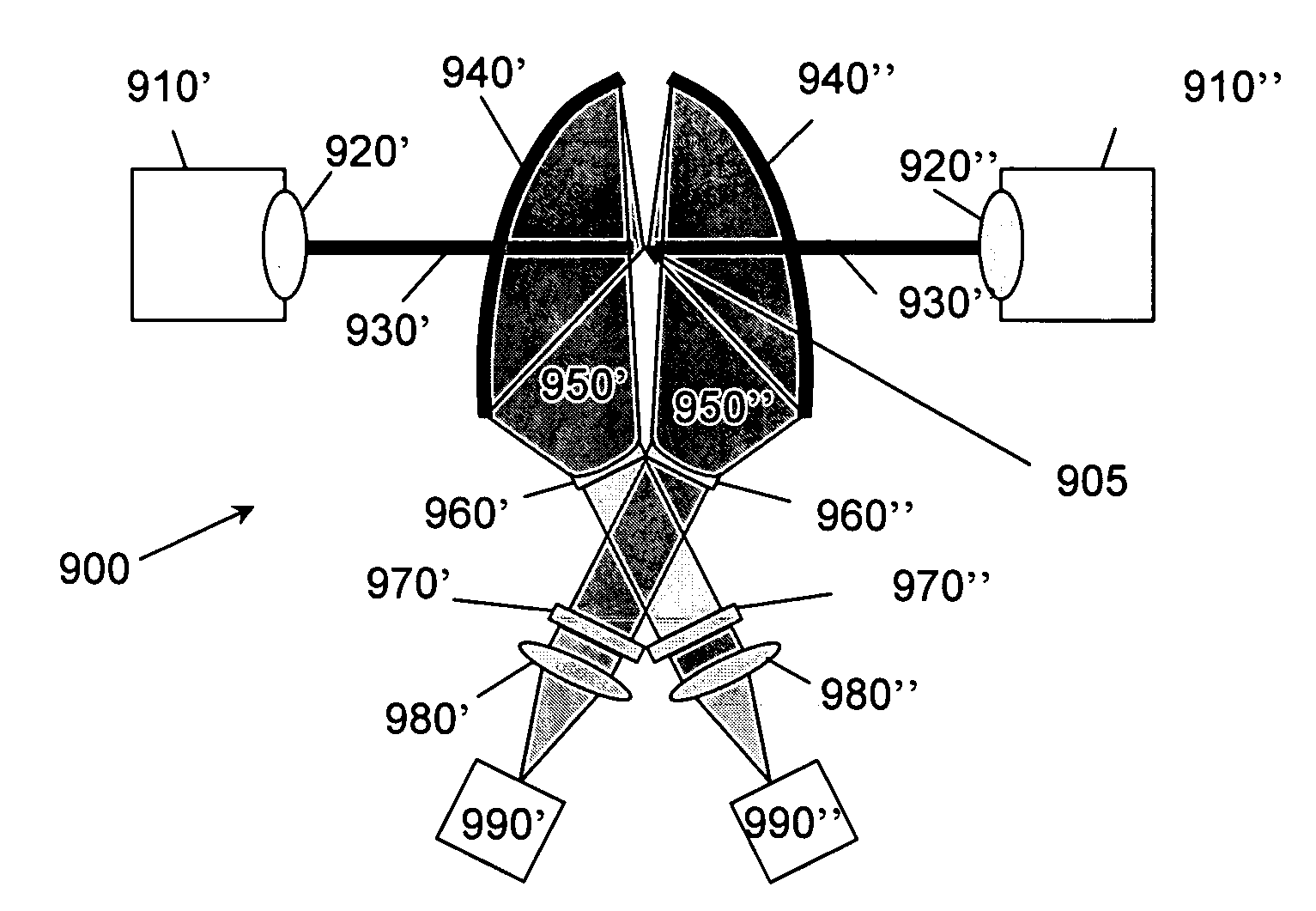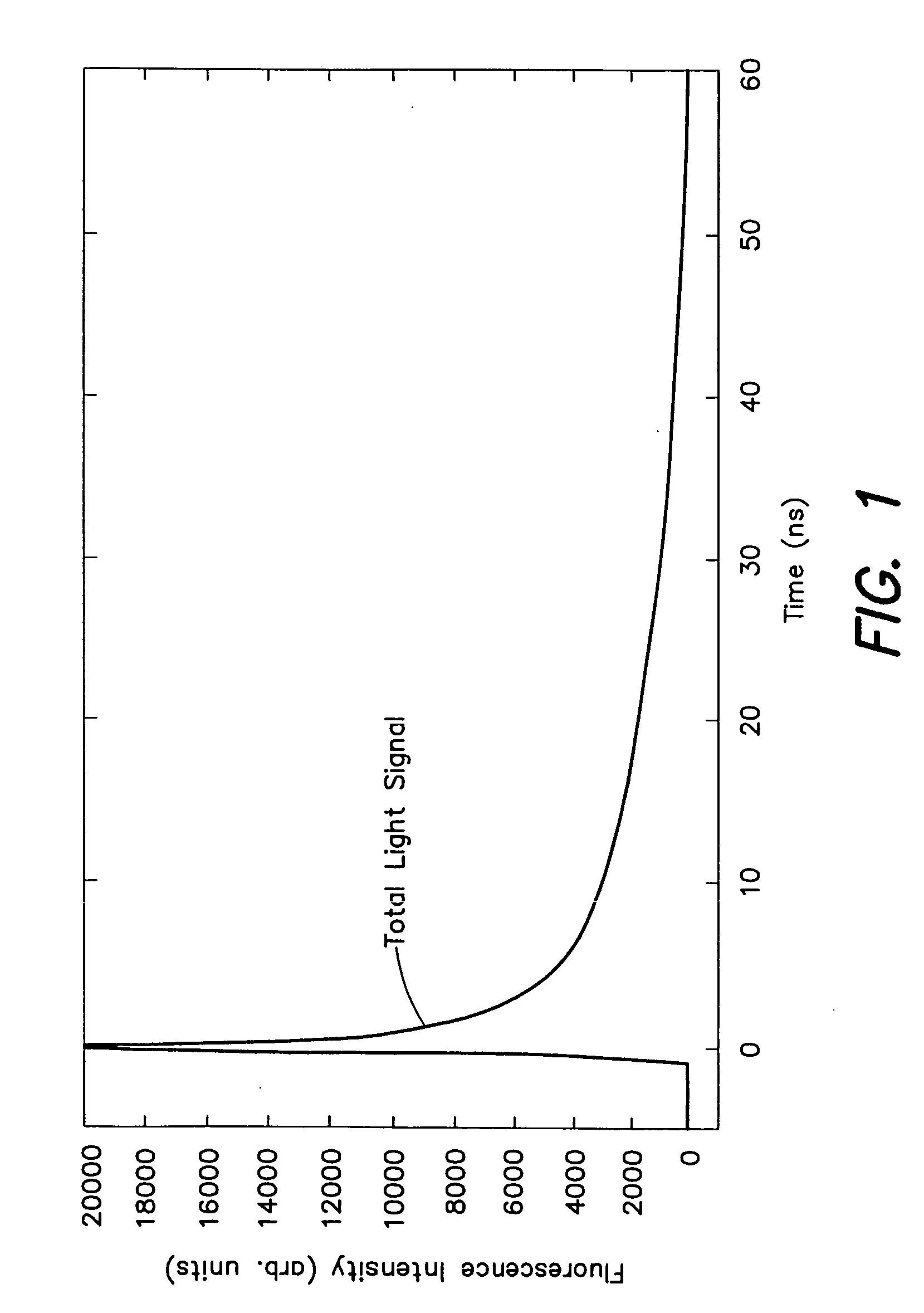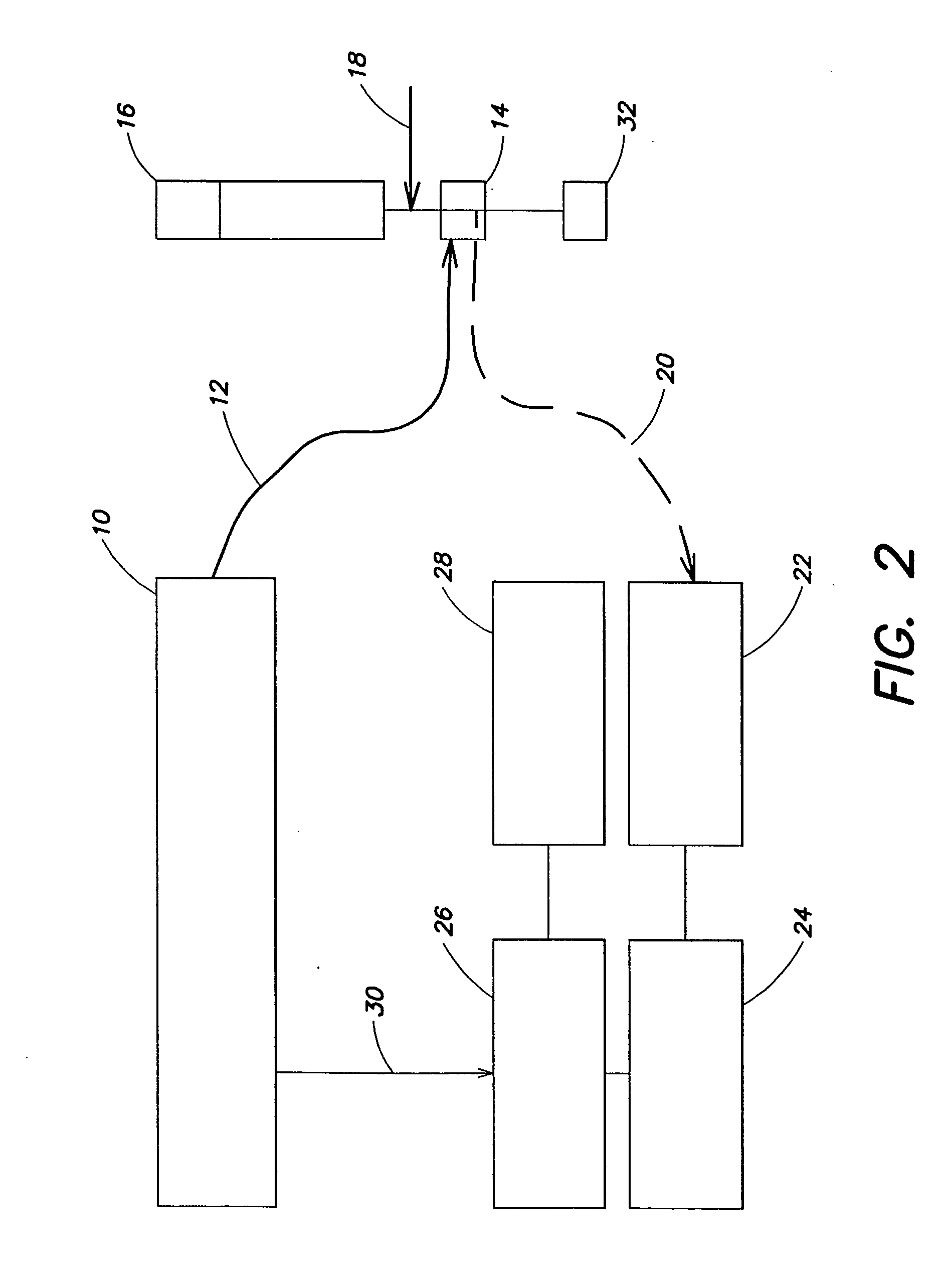Bioaerosol discrimination
a bioaerosol and discrimination technology, applied in the field of classification of particles, can solve the problems of false positive indications of fluorescence-based instruments and detectors still suffering from potential interference, and achieve the effect of promoting radiation emission
- Summary
- Abstract
- Description
- Claims
- Application Information
AI Technical Summary
Benefits of technology
Problems solved by technology
Method used
Image
Examples
example 1
Prophetic Characterization System
[0081] Prophetic data can be generated for several types of particles; non-fluorescent particles (scattered light only); particles containing a mixture of common atmospheric PAHs having representative lifetimes about 15, about 22, and about 30 ns; hazardous bioaerosols (respirable bioparticles) having a representative lifetime of about 2 ns; background bioaerosols (e.g., a pollen grain) having a typical lifetime of about 2 ns.
[0082] This prophetic example data is constructed to approximate the results expected from one example implementation of the present invention. The experimental system can comprise a quadrupled SURELITE I™ YAG laser emitting at 266 nm available from Continuum, Inc., and a flow cell comprising about two-inch cubic aluminum block bored through on three orthogonal axes. Aerosol particles are introduced isokinetically within an annular, particle-free sheath flow, wherein the aerosols interact with the emitted laser energy in a cen...
example 2
Analysis of a Prophetic Response
[0085] FLUOFIT™ software was used to analyze a convolved representative response to derive up to three exponential decay components and one scatter component. The resultant of this was a set of intensities and lifetimes that characterize different components of the decay. Intensities for short-lived fluorescence were summed and taken as representative of biofluorescence. Intensities for long-lived fluorescence were summed and taken as representative of PAH fluorescence. The IRF intensity was taken as representative of scattered light, which is typically related to particle size. The short- and long-lived fluorescence totals and scattered light total were used to locate the particle on a three-dimensional map to classify the various particles.
[0086] Table 1 lists exponential decay parameters of representative species that may be encountered. For PAHs, the “relative importance” (RI) is a measure of the importance with respect to fluorescence measureme...
example 3
Mapping Particle Characteristics
[0095] In this example, particle characteristics as represented by a discriminant vector were mapped according to their position in time-resolved fluorescence signal space.
[0096]FIG. 8 is a map showing the relative positions of each of the constructed particles analyzed in Example 2 with respect to a scatter component, a non-biological fluorescence component, and a biological fluorescence component. The discriminant vectors for each of the dust grain 1, PAH mixture 2, spore 3, pollen 4, and spore with PAH 5 were mapped.
[0097] As shown, the spatial groupings provided an indicating of the general composition of particle. Thus, the technique of mapping can be utilized to facilitate the characterization of the nature of particles based on the particle's deconvolved response. Other representative discriminant vectors have also been shown for comparison.
[0098] As discussed above, other mapping techniques can be utilized to characterize the nature of eac...
PUM
 Login to View More
Login to View More Abstract
Description
Claims
Application Information
 Login to View More
Login to View More - R&D
- Intellectual Property
- Life Sciences
- Materials
- Tech Scout
- Unparalleled Data Quality
- Higher Quality Content
- 60% Fewer Hallucinations
Browse by: Latest US Patents, China's latest patents, Technical Efficacy Thesaurus, Application Domain, Technology Topic, Popular Technical Reports.
© 2025 PatSnap. All rights reserved.Legal|Privacy policy|Modern Slavery Act Transparency Statement|Sitemap|About US| Contact US: help@patsnap.com



